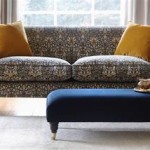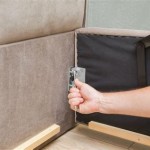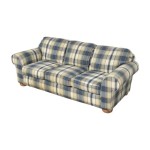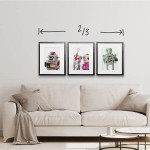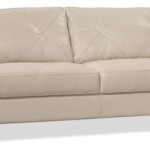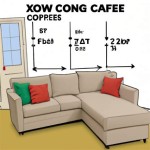Sofa Design: A Comprehensive Overview
The sofa, a cornerstone of modern living spaces, serves as both a functional seating arrangement and a significant design element. Its design encompasses a wide range of considerations, from structural integrity and ergonomic comfort to aesthetic appeal and stylistic coherence with the surrounding environment. A thorough examination of sofa design necessitates an understanding of its various components, design principles, and evolving trends.
The design process for a sofa typically begins with defining its intended use and target audience. Will the sofa primarily serve as a casual relaxation space, a formal seating area for guests, or a multi-functional piece for sleeping and lounging? The answer to this question significantly influences the overall size, shape, and construction of the sofa. Considerations such as the number of occupants, the desired level of comfort, and the available space are crucial factors in the initial planning stages.
Material selection plays a pivotal role in both the aesthetic and functional characteristics of a sofa. The frame, usually constructed from hardwood or engineered wood, provides the structural foundation. The suspension system, which supports the cushions and occupants, can vary from traditional coil springs to interwoven webbing or a combination of both. The choice of filling materials for the cushions, such as down, feathers, foam, or a blend, directly impacts the level of comfort and support. Finally, the upholstery fabric determines the sofa's visual appeal, durability, and ease of maintenance. Options range from natural fibers like cotton and linen to synthetic materials like polyester and microfiber, each offering distinct advantages and disadvantages.
Key Considerations in Sofa Design
Several key considerations are paramount to successful sofa design, ensuring a balance between functionality, aesthetics, and durability. These considerations impact the overall user experience and the longevity of the furniture piece.
Ergonomics and Comfort
Ergonomics, the science of designing products to optimize human well-being and overall system performance, is fundamental to sofa design. The height of the seat, the depth of the seat cushion, and the angle of the backrest all contribute to the overall comfort and support offered by the sofa. A seat that is too low can make it difficult to stand, while a seat that is too deep can cause discomfort for individuals with shorter legs. The backrest should provide adequate lumbar support to maintain a healthy posture and prevent back pain. The cushioning materials should offer a balance of softness and support, conforming to the body's contours without sagging or compressing excessively. Furthermore, the armrests should be positioned at a comfortable height to support the arms and shoulders.
The density and composition of the foam used in the cushions also play a significant role in comfort. High-density foam provides greater support and durability, while lower-density foam offers a softer, more plush feel. A combination of different foam types can be used to achieve a desirable balance of comfort and support. For example, a layer of high-density foam can provide a firm base, while a layer of memory foam can conform to the body's shape for personalized comfort. The addition of down or feather fillings can further enhance the luxuriousness and softness of the cushions.
The angle of the backrest is another critical ergonomic consideration. A slight recline can promote relaxation, while a more upright backrest can provide better support for reading or conversation. Some sofas feature adjustable backrests that allow users to customize the angle to their preferred position. The design of the armrests can also contribute to comfort. Wide, padded armrests are ideal for lounging, while narrower, more structured armrests are better suited for formal seating arrangements.
Aesthetics and Style
Beyond functionality, the aesthetic appeal of a sofa is a crucial factor in its design. The style of the sofa should complement the overall decor of the room and reflect the personal taste of the occupants. Sofas are available in a wide range of styles, from traditional and classic to modern and contemporary. The choice of upholstery fabric, the shape of the frame, and the detailing all contribute to the overall aesthetic of the sofa.
Traditional sofa styles often feature ornate detailing, such as rolled arms, button tufting, and carved wooden legs. These sofas tend to be more formal and elegant, often upholstered in luxurious fabrics like velvet or silk. Modern sofa styles, on the other hand, typically have clean lines, minimalist designs, and a more casual feel. These sofas often incorporate materials like leather, linen, or synthetic fabrics. Contemporary sofa designs often push the boundaries of traditional aesthetics, incorporating unconventional shapes, materials, and colors.
The choice of upholstery fabric has a significant impact on the overall aesthetic of the sofa. Different fabrics have different textures, colors, and patterns, which can dramatically alter the look and feel of the sofa. For example, a velvet sofa exudes luxury and sophistication, while a linen sofa has a more relaxed and casual feel. The color of the fabric can also influence the mood of the room. Neutral colors like beige, gray, and white create a calming and versatile backdrop, while bolder colors like blue, green, or red can add a pop of personality to the space.
The size and shape of the sofa also contribute to its aesthetic appeal. A large sectional sofa can create a cozy and inviting atmosphere, while a smaller loveseat is better suited for smaller spaces. The shape of the frame, whether it is straight, curved, or angular, can also influence the overall look of the sofa.
Durability and Construction
The durability and construction of a sofa are essential factors in ensuring its longevity and performance. A well-constructed sofa should be able to withstand daily use and maintain its structural integrity for many years. The frame should be made from solid hardwood or engineered wood that is properly joined and reinforced. The suspension system should be robust enough to support the weight of the occupants without sagging or breaking down. The upholstery fabric should be durable and resistant to wear and tear, stains, and fading.
The quality of the frame is a critical factor in the overall durability of the sofa. Hardwood frames, such as those made from oak, maple, or birch, are the most durable and long-lasting. Engineered wood frames, such as those made from plywood or MDF, are a more affordable option but may not be as strong as hardwood. The frame should be properly joined using screws, dowels, or mortise-and-tenon joints. Glue should also be used to reinforce the joints and prevent them from loosening over time.
The suspension system is responsible for supporting the weight of the occupants and distributing it evenly across the frame. Coil springs are a traditional suspension system that provides good support and bounce. Webbing suspension systems, which consist of interwoven straps of fabric or rubber, are a more modern and affordable option. A combination of coil springs and webbing can also be used to achieve a balance of support and comfort. The suspension system should be securely attached to the frame to prevent it from shifting or sagging.
The upholstery fabric should be chosen for its durability and resistance to wear and tear. Natural fibers like cotton and linen are comfortable and breathable but may be more prone to staining and fading. Synthetic fabrics like polyester and microfiber are more durable and stain-resistant but may not be as breathable. The fabric should be tightly woven and securely attached to the frame to prevent it from tearing or unraveling.
Evolving Trends in Sofa Design
Sofa design is constantly evolving to reflect changing lifestyles and aesthetic preferences. New materials, technologies, and design concepts are continually being introduced, pushing the boundaries of what is possible in sofa design.
Sustainability and Eco-Friendly Materials
Increasingly, consumers are prioritizing sustainability and eco-friendliness in their furniture purchases. This trend is driving designers to explore the use of sustainable materials and manufacturing processes in sofa design. Recycled materials, such as recycled polyester or reclaimed wood, are becoming more common. Organic cotton and linen, which are grown without the use of harmful pesticides and chemicals, are also gaining popularity. Designers are also focusing on reducing waste and energy consumption in the manufacturing process.
The use of formaldehyde-free glues and low-VOC finishes is also becoming more prevalent. Formaldehyde is a known carcinogen that can be emitted from certain adhesives and finishes. VOCs (volatile organic compounds) are chemicals that can contribute to indoor air pollution. By using formaldehyde-free glues and low-VOC finishes, designers can create sofas that are healthier for both the environment and the occupants of the home.
Another aspect of sustainable sofa design is the longevity of the product. Sofas that are designed to last for many years reduce the need for frequent replacements, which minimizes waste. Durable materials, high-quality construction, and timeless designs are all factors that contribute to the longevity of a sofa.
Modular and Customizable Designs
Modular sofas, which consist of individual sections that can be arranged in various configurations, are becoming increasingly popular. These sofas offer flexibility and adaptability, allowing users to customize the layout to suit their needs and space. The sections can be easily rearranged to create different seating arrangements, such as a large sectional sofa for entertaining, a smaller loveseat for intimate gatherings, or individual chairs for versatile seating options.
Customizable sofas, which allow users to choose the upholstery fabric, leg style, cushioning materials, and other design elements, are also gaining traction. This allows consumers to create sofas that are truly unique and personalized to their individual tastes and preferences. Some manufacturers offer online tools that allow users to design their own sofas from scratch, selecting from a wide range of options.
The rise of e-commerce has made it easier for consumers to access a wider range of sofa designs and customization options. Online retailers often offer a larger selection than brick-and-mortar stores, and they can often provide lower prices due to lower overhead costs. Online platforms also allow consumers to easily compare different designs and prices, and to read reviews from other customers.
Technology Integration
Technology is increasingly being integrated into sofa design, enhancing both comfort and functionality. Sofas with built-in USB charging ports, wireless charging pads, and adjustable headrests are becoming more common. Some sofas even feature integrated sound systems and massage functions.
Smart sofas, which can be controlled via a smartphone app or voice commands, are also emerging. These sofas can adjust the temperature, lighting, and even the reclining position of the backrest. Smart sofas can also be integrated with other smart home devices, such as smart TVs and smart lights, to create a seamless and automated entertainment experience.
The integration of technology into sofa design is likely to continue to evolve in the coming years, as new technologies become available and consumers demand more convenience and functionality from their furniture.
The continuing evolution of sofa design reflects a dynamic interplay between functional needs, aesthetic desires, and technological advancements. As lifestyles and preferences continue to evolve, so too will the design of this essential piece of furniture.

5 Tips For Styling Your Sofa

Modern Classic Fabric Sectional Sofa Set Living Room Design Corner Furniture

25 Types Of Sofas Explained Architectural Digest

High Defined U Shaped Luxurious Fabric Sofa Set Bed

L Shape Sofa Modern Set Design Sheesham Wood Casa Furnishing

7 Seater Velvet Maroon L Shape Wooden Sofa Set With Lounger At Rs 150000 In Lucknow

Classic Design Sofa Set Quality Wood Yt 40

7 Seater Rectangular Royal Carved Golden Sofa Set With Table 3 2 1 At Best In Saharanpur

Upholstered L Shape Modular Sectional Sofa Diy Combination Convertible Minimalist Couch With Ottoman Modern 4 Seat Reversible Chaise For Living Room Orange Com

Modern Straight Row Sofa Cream Style Living Room Technology Fabric Furniture China Made In Com

